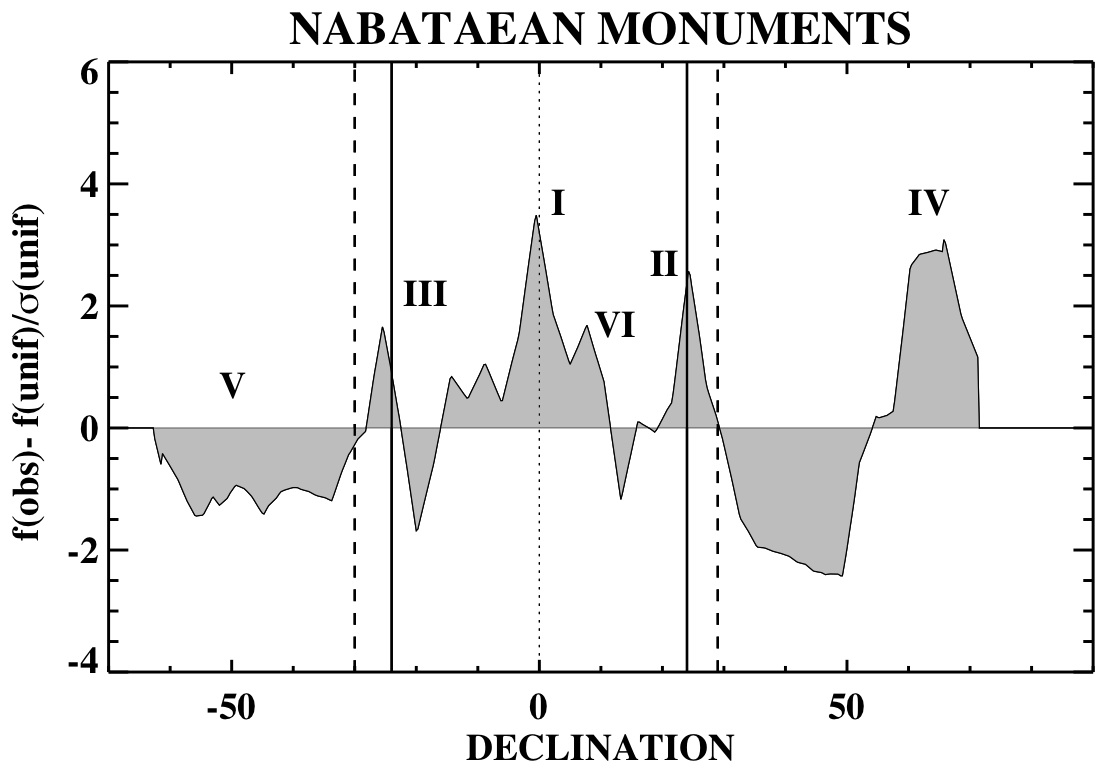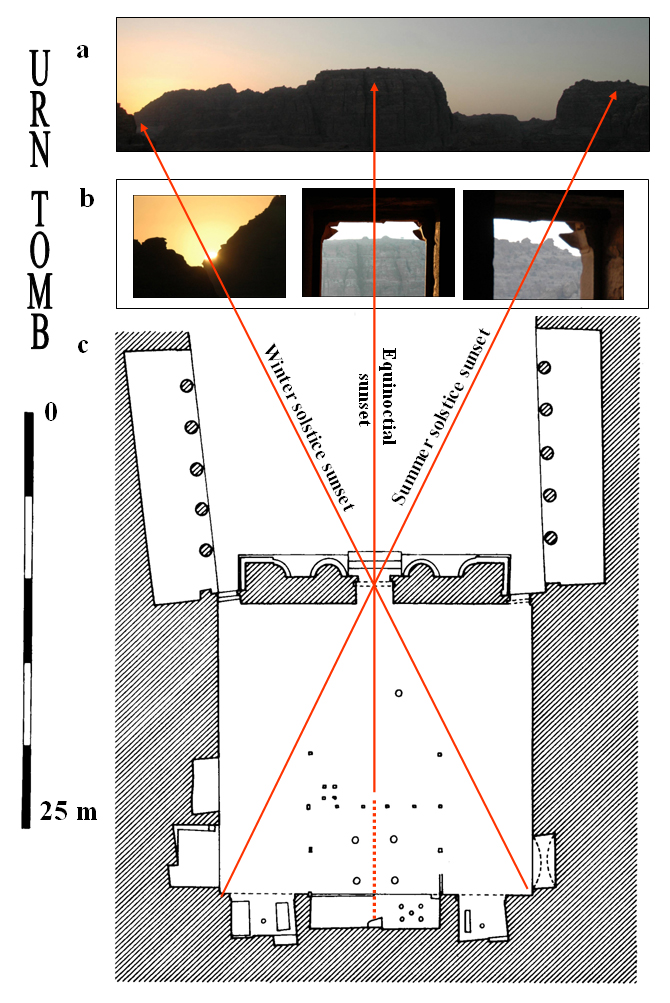Light and Shadows in Nabatean Petra
Luces y Sombras sobre la Petra Nabatea
The Nabateans built several monuments in Petra and elsewhere displaying a decoration with a preference for astronomical motifs, possibly as a reflection of their religion. However, due to the lack of direct written accounts and the scarcity of inscriptions we do not have a clear knowledge on the precise nature of such believes and how these reflected on the calendar or the religious time-keeping system of this ancient society. A statistical analysis of the orientation of their sacred monuments (see Belmonte et al. 2013) demonstrates that astronomical orientations were often part of an elaborated plan and possibly a trace of the astral nature of Nabataean religion (see Fig. 1). Petra and other monuments in the ancient Nabataean kingdom have proven to be marvellous laboratories of the interaction between landscape features and astronomical events showing impressive hierophanies on particular monuments related to cultic times and worships. Among other findings, the famous Ad Deir has shown a fascinating ensemble of light and shadow effects, perhaps connected with the bulk of Nabataean mythology (see Fig. 2), while from the impressive Urn tomb, a series of suggestive solstitial and equinoctial alignments emanate which might have lately helped its selection as the cathedral of the city (see Fig. 3). Our work demonstrates that the sky was a substantial element on Nabataean religion and reveals new evidence for cultic worship centred on the celestial sphere.

Fig. 1 Declination histogram showing that solstitial, equinoctial and cardinal orientation were the most frequent for monuments in ancient Nabataea, including Petra (From Belmonte et al. 2013a).

Fig. 2. Winter solstice sunset at Ad Deir. The left image shows the light and shadow effect in the innermost sacred area of the structure, the môtab. The right image demonstrates the accurate solstitial phenomenology associated with the site. Dotted line corresponds to the path followed during winter solstice sunset by the upper limb of the sun for the First century BC. Photographs by J.A. Belmonte and A.C. González-García, respectively. Adapted from belmonte et al. (2013a).

Fig. 3. Sunset phenomenology in the western horizon (a) related to the solstices and the equinoxes as seen from the Urn tomb enclosure (b). Our data suggests that the site and the internal distribution of the monument were deliberately chosen with an astronomical objective in mind. Adapted from Belmonte et al. (2013a).